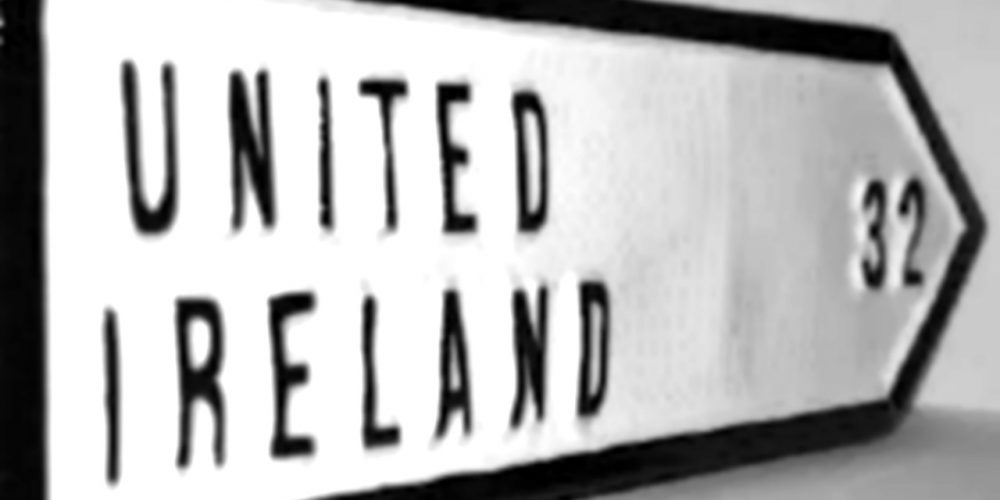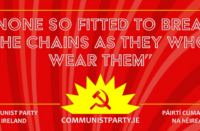With Sinn Féin recently securing a hat trick of seats, their border poll call has escalated. In this article, unity economics are engaged to strengthen preparation for such prospects and likely aftermath. In doing so, I assume that the economics of unity will be settled between the British and Irish governments under capitalist conditions (a reasonable assumption given the weakness of the Left).
Take Northern Irish public finances. Sinn Féin argues absorbing the approx. £10 billion Northern subvention is overstated. Part of the cost is incurred by being in the union. Some of this is correct. A bulk of the subvention, close to £4 billion, is public pensions; post-unity, it seems improbable the British would not respect existing national insurance contributions even if it would potentially create a two-tier pension payout in the new Ireland. And as Sinn Féin has argued, some of the £10 billion is undertaken by the British “on behalf” of the “devolved regions” of the UK, so-called “non-identifiable” public expenditure. The Northern population, via non-identifiable public expenditure, contribute £1 billion to British defence. Again, easily cast aside post-unity.
However, UK debt interest repayments have been raised by some like John Fitzgerald. His figures seem excessive, but the British might maintain the North “owes” part of this debt and seek a contribution perhaps based on current levels, about £1bn per annum, for a limited period post-unification. Alternatively, might the British forfeit this claim for political reasons as they did after a few years with the Free State? It would not be in their interest to financially weaken their neighbor given trade and diplomatic relations, while even the Irish government might have the gumption to argue that the British cannot externalize partition’s long-run economic costs on to us. Public fixed assets (NHS hospitals, government buildings, BBC broadcasting stations) might raise some challenges, although a pragmatic approach again could hold sway. The Czechoslovakian divorce might provide helpful guidelines here.
Even allowing for some “shaving off” of the economic burden by leaving the UK, a sizeable annual deficit of approximately £5 billion will remain. Whereas less than a third of public spending in the South goes on ‘social protection’ (pensions, welfare and income support), in the North, it is not far off 50% (and this is before considering upgrading welfare benefits in the North to Southern levels). Holding the capitalist status quo constant makes this challenging: we know from polling that support for unity drops to under 40% in the 26 counties when people are asked if they will pay higher taxes for it. Will the government turn to Austerity 2.0? Will the “Nordies” become the “Ossies” of the New Ireland? Will an EU cohesion fund be triggered?
It would be preferable if Sinn Féin recognised the economics of unity work best under a situation where the social surplus is distributed differently. This seems unlikely. Sinn Féin seem to believe a united – de facto capitalist – Ireland will unleash economic benefits, overwhelming the costs. One study by Huber and Van Nieuwkoop (2015), which Nationalist-Republicans championed, suggests a €36 billion growth in GDP within the first decade. The report has problems. The report’s (neo-liberal) assumptions are that it supposes all those losing their jobs in the Northern public sector would supply the private sector to such an extent that the need for a “Dublin” fiscal transfer to the North would be eliminated. Productivity is assumed to converge with Southern levels in approximately a decade based on the assumption foreign capital would flood the North. That ignores evidence demonstrating that changing productivity levels requires deep-seated infrastructural reform alongside the “right kind” of capitalist investment.
Finally, a brief conclusion on political reconfigurations post-unity. One configuration is a 32-county centralised state where the North simply integrates into the Republic. A second reconfiguration is something like “Éire Nua” – improbable under capitalist conditions given its radical restructuring of Southern governance structures. A third is the North as a devolved entity within a new Ireland. This could include a transitioning “pooled sovereignty” before reverting across time to the Irish government in full. In this scenario the North would be like the Brčko District or the Principality of Andorra for a period until economic convergence was eased. Another alternative is a semi-autonomous North and South – for issues like education, justice and some public sector bodies – to accommodate 100 years of institutional divergence but conjoined under an umbrella confederation for addressing matters easier to scale up at all-island level (e.g. agriculture, economy, environment, foreign policy).
Some options are compromises of varying degrees to acknowledge Northern difference. Yet the 2021 census shows 59% of the six counties’ population identify as “British only” and “Northern Irish only” and 33% “Irish only” (despite 42% indicating a Catholic faith), so concessions to maintain goodwill in the new state structure seem sensible. Such compromises are hardly injurious to Communists’ overriding objectives either. After all, our aim is to liberate the forces of production from the constraints of the existing relations of production – everything else is subordinate to that aim.






